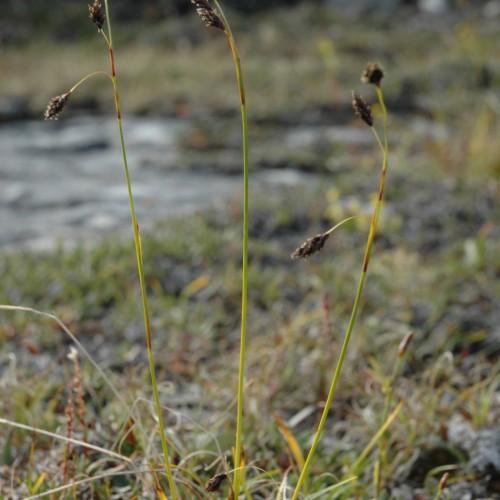
Short-Leaved Sedge
Carex fuliginosa
Watering:
Frequent
Hardiness Zone:
Flowers:
Flowers
Sun:
full sun,part shade
Fruits:
Fruits Ready In
Leaf:
Yes
Growth Rate:
Low
Drought Tolerant:
Yes
Salt Tolerant:
Yes
Care Level:
Medium
watering
Short-Leaved Sedge (Carex fuliginosa) requires moderate watering; it should be watered deeply and thoroughly every 7-10 days depending on the season and your local weather conditions. Be sure to avoid over-watering or allowing the soil to become too soggy - keep the soil moist but not wet. During the warmer months, usually late spring to early fall, it's a good idea to check the soil weekly. If it feels dry to the touch an inch deep, it may be time to water your plant. Always use lukewarm water. In winter, Carex fuliginosa needs much less water, usually no more than once a month if the temperatures remain below freezing. Before you water, check the soil and if it's still damp, wait until it's dry before watering again.
sunlight
Short-Leaved Sedge needs ample sunlight for optimal growth. During the spring and summer season, it is best for them to receive a minimum of 4-6 hours of direct sunlight daily. During the winter season, they should be given at least 2-4 hours of direct sunlight as this plant species does best in cooler temperatures. Full shade should be avoided as Short-Leaved Sedge will not thrive in it. Placing them in a spot with some partial shade may be beneficial, especially during the summer when the rays of the sun can be stronger.
pruning
Short-Leaved Sedge (Carex fuliginosa) should be pruned in late winter while it is still slightly dormant. Prune back old dead foliage to promote a healthy flush of new growth in the spring. This species is considered to be a low-maintenance plant, and so it does not require much pruning. Prune lightly to remove dead or fading leaves if necessary. Prune to shape if desired, or cut back overgrown plants to help keep them tidy. Avoid pruning too much, as it can damage the plant and reduce its vigor.
